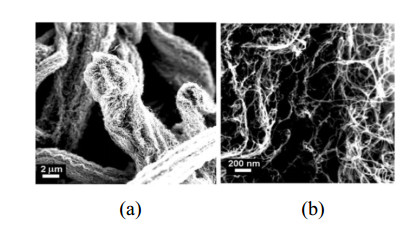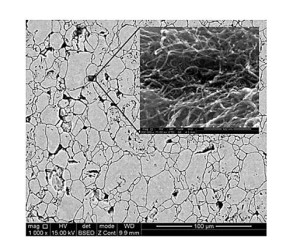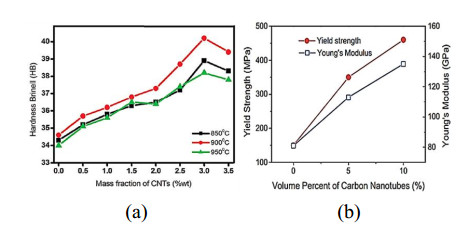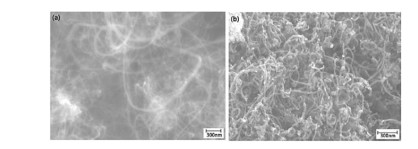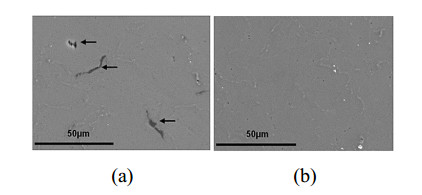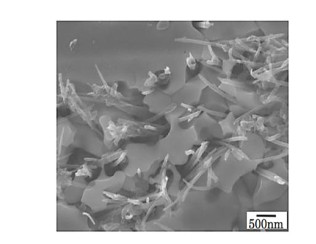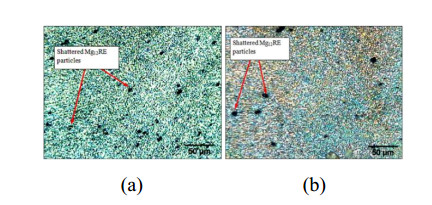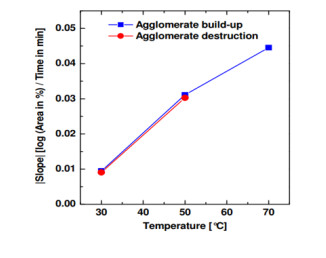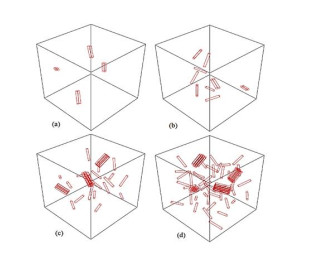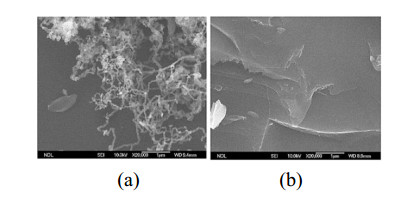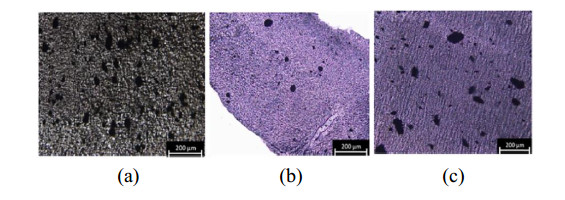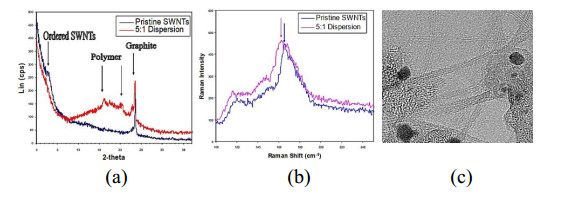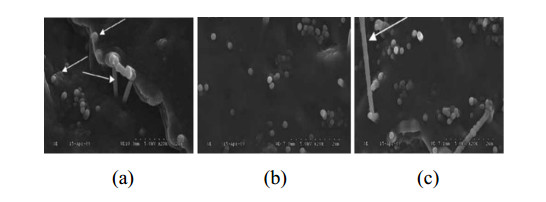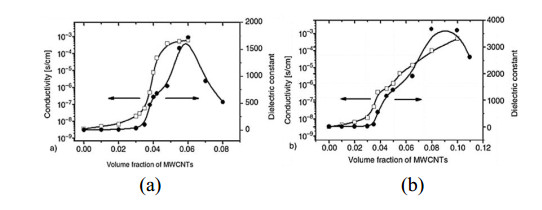| 1.
|
Bashida V. Basheer, Jinu Jacob George, Suchart Siengchin, Jyotishkumar Parameswaranpillai,
Polymer grafted carbon nanotubes—Synthesis, properties, and applications: A review,
2020,
22,
2352507X,
100429,
10.1016/j.nanoso.2020.100429
|
|
| 2.
|
Mohd Nurazzi Norizan, Muhammad Harussani Moklis, Siti Zulaikha Ngah Demon, Norhana Abdul Halim, Alinda Samsuri, Imran Syakir Mohamad, Victor Feizal Knight, Norli Abdullah,
Carbon nanotubes: functionalisation and their application in chemical sensors,
2020,
10,
2046-2069,
43704,
10.1039/D0RA09438B
|
|
| 3.
|
Ahmed Gamal El-Shamy,
Polyvinyl alcohol and silver decorated carbon quantum-dots for new nano-composites with application electromagnetic interface (EMI) shielding,
2020,
146,
03009440,
105747,
10.1016/j.porgcoat.2020.105747
|
|
| 4.
|
Rami J. Sldozian, A.G. Tkachev, I.V. Burakova, Z.A. Mikhаleva,
Improve the mechanical properties of lightweight foamed concrete by using nanomodified sand,
2021,
34,
23527102,
101923,
10.1016/j.jobe.2020.101923
|
|
| 5.
|
Saowapa T. Niyomthai, Prasit Pavasant, Pitt Supaphol,
Adsorption study of bovine serum albumin onto multiwalled carbon nanotubes,
2020,
33,
22147853,
1814,
10.1016/j.matpr.2020.05.060
|
|
| 6.
|
M. Alajmi, K.R. Alrashdan, T. Alsaeed, A. Shalwan,
Tribological characteristics of graphite epoxy composites using adhesive wear experiments,
2020,
9,
22387854,
13671,
10.1016/j.jmrt.2020.09.106
|
|
| 7.
|
Venkataramanan Srinivasan, Selvaraj Kunjiappan, Ponnusamy Palanisamy,
A brief review of carbon nanotube reinforced metal matrix composites for aerospace and defense applications,
2021,
2008-9295,
10.1007/s40089-021-00328-y
|
|
| 8.
|
S. S. Godara, P. K. Mahato,
Micromechanical technique based prediction of effective properties for hybrid smart nanocomposites,
2020,
1537-6494,
1,
10.1080/15376494.2020.1851827
|
|
| 9.
|
Ohood Q Alsmairat, Feilin Gou, Christopher M Dmuchowski, Paul R Chiarot, Cheol Park, Ron N Miles, Changhong Ke,
Quantifying the interfacial load transfer in electrospun carbon nanotube polymer nanocomposite microfibers by using in situ Raman micromechanical characterization techniques,
2020,
53,
0022-3727,
365302,
10.1088/1361-6463/ab8fdd
|
|
| 10.
|
Barbara Salles Macena da Cruz, Lucas Galhardo Pimenta Tienne, Fernanda Fabbri Gondim, Ludmila Silva Candido, Maria de Fátima Vieira Marques, Erica Gervasoni Chaves,
Influence of the addition of multi‐walled carbon nanotubes on the thermal and mechanical properties of polyamide‐11 before and after aging tests,
2021,
138,
0021-8995,
50071,
10.1002/app.50071
|
|
| 11.
|
Mengxuan Zhang, Guoqing Ning, Zhihua Xiao,
Binder‐Assisted Dispersion of Agglomerated Carbon Nanotubes for Efficiently Establishing Conductive Networks in Cathodes of Li‐Ion Batteries,
2020,
8,
2194-4288,
2000589,
10.1002/ente.202000589
|
|
| 12.
|
Débora S. Craveiro, Maria A. R. Loja,
An Assessment of Thick Nanocomposite Plates’ Behavior under the Influence of Carbon Nanotubes Agglomeration,
2021,
5,
2504-477X,
41,
10.3390/jcs5020041
|
|
| 13.
|
Devesh Punera,
The effect of agglomeration and slightly weakened CNT–matrix interface on free vibration response of cylindrical nanocomposites,
2021,
0001-5970,
10.1007/s00707-020-02933-y
|
|
| 14.
|
Kar Fei Chan, Mohd Hafiz Mohd Zaid, Md Shuhazlly Mamat, Shahira Liza, Masaki Tanemura, Yazid Yaakob,
Recent Developments in Carbon Nanotubes-Reinforced Ceramic Matrix Composites: A Review on Dispersion and Densification Techniques,
2021,
11,
2073-4352,
457,
10.3390/cryst11050457
|
|
| 15.
|
Mlungisi Martin Ngoma, Machodi Mathaba, Kapil Moothi,
Removal of Cu2+, Fe2+, Ni2+, Zn2+ and Cl− from Industrial wastewater using a Polyethersulfone/Carbon Nanotube/Polyvinyl alcohol composite membrane,
2021,
26670100,
100116,
10.1016/j.envc.2021.100116
|
|
| 16.
|
Nur Aina I. M. Mokhtar, Ruzniza M. Zawawi, Wan M. Khairul, Nor A. Yusof,
Electrochemical and optical sensors made of composites of metal–organic frameworks and carbon-based materials. A review,
2022,
20,
1610-3653,
3099,
10.1007/s10311-022-01403-2
|
|
| 17.
|
Kai Zhang, Xiaojun Tang, Fuzheng Guo, Kangli Xiao, Dexin Zheng, Yunsheng Ma, Qingsong Zhao, Fangxin Wang, Bin Yang,
Improved Dynamic Compressive and Electro-Thermal Properties of Hybrid Nanocomposite Visa Physical Modification,
2022,
13,
2079-4991,
52,
10.3390/nano13010052
|
|
| 18.
|
Karamvir Singh, Sandeep Sharma, Monish Gupta, C.C. Tripathi,
Fabrication of serpentine and I structured graphene-CNT based highly sensitive and flexible strain sensors,
2021,
250,
01679317,
111631,
10.1016/j.mee.2021.111631
|
|
| 19.
|
Balakrishna Adhikari, B.N. Singh,
A Coupled Mori–Tanaka model and FEM RVE approach for the geometrical nonlinear dynamic response of the FG-CNTRC plate based on a novel shear strain function using isogeometric finite element procedure,
2022,
280,
02638223,
114947,
10.1016/j.compstruct.2021.114947
|
|
| 20.
|
Karamvir Singh, Monish Gupta, C. C. Tripathi,
Fabrication of flexible and sensitive laser-patterned serpentine-structured graphene–CNT paper for strain sensor applications,
2022,
128,
0947-8396,
10.1007/s00339-022-06276-4
|
|
| 21.
|
Qiuyan Duan, Bijian Lan, Yinxiang Lv,
Highly Dispersed, Adhesive Carbon Nanotube Ink for Strain and Pressure Sensors,
2022,
14,
1944-8244,
1973,
10.1021/acsami.1c20133
|
|
| 22.
|
Chloe Curtis-Smith, Marianna Rogers, Jingyao Dai, Erick Gonzalez, Carina Xiaochen Li, Yuying Lin, Ashley L. Kaiser, Jeonyoon Lee, Brian L. Wardle,
2023,
Fabrication and Characterization of Carbon Nanotube/Bismaleimide Nanocomposite Laminates with Ultrahigh Nanofiber Volume Fraction,
978-1-62410-699-6,
10.2514/6.2023-2031
|
|
| 23.
|
Fei Teng, Jian Wu, Benlong Su, Youshan Wang,
Enhanced adhesion friction behaviors of nature rubber composites by applications of carbon nanotube: Experiment and molecular insight,
2023,
181,
0301679X,
108333,
10.1016/j.triboint.2023.108333
|
|
| 24.
|
Evangelos Kasapis, Konstantina Tsitoni, Gkreti-Maria Manesi, Ioannis Moutsios, Dimitrios Moschovas, Dmitry V. Vashurkin, Denis S. Kotlyarskiy, Dimitri A. Ivanov, Apostolos Avgeropoulos,
Self-assembly behavior of ultra-high molecular weight in-situ anionically synthesized polymer matrix composite materials “grafted from” single- or multi-wall CNTs,
2021,
235,
00323861,
124243,
10.1016/j.polymer.2021.124243
|
|
| 25.
|
Zarina Saidova, Grigory Yakovlev, Zoltán Orbán, Valery Grakhov, Larisa Urkhanova, Solbon Lkhasaranov,
Cement Compositions Modified with Dispersed Magnesium Silicate Dihydrate- and Carbon-Based Additives,
2022,
2,
2673-7108,
101,
10.3390/constrmater2020008
|
|
| 26.
|
Fumio Ogawa, Chitoshi Masuda,
Fabrication and the mechanical and physical properties of nanocarbon-reinforced light metal matrix composites: A review and future directions,
2021,
820,
09215093,
141542,
10.1016/j.msea.2021.141542
|
|
| 27.
|
Ronny Thapelo Tebeta, Daniel Makundwaneyi Madyira, Asghar Mohammadpour Fattahi, Harry Magadhlela Ngwangwa,
2022,
Investigation of Tensile Properties of Polyamide-Calcium Carbonate Nanocomposites at Various Temperatures,
978-1-6654-8400-8,
182,
10.1109/ICMIMT55556.2022.9845274
|
|
| 28.
|
Raghuram V. Pucha, Shivani Kundalia, Nikhil Nandikanti, Devon Phelps,
2022,
Analysis of Hybrid Composites with Nanofillers using Representative Volume Element and Laminate Models,
978-1-62410-631-6,
10.2514/6.2022-0500
|
|
| 29.
|
Simona Luminita Nica, Mirela-Fernanda Zaltariov, Daniela Pamfil, Alexandra Bargan, Daniela Rusu, Delia Mihaela Raţă, Constantin Găină, Leonard Ionut Atanase,
MWCNTs Composites-Based on New Chemically Modified Polysulfone Matrix for Biomedical Applications,
2022,
12,
2079-4991,
1502,
10.3390/nano12091502
|
|
| 30.
|
Kangda Hao, Yongkang Gao, Lianyong Xu, Yongdian Han, Lei Zhao, Wenjin Ren,
Plasticity improvement coupled by carbon nanotubes and beam oscillation in laser-arc hybrid welding of magnesium alloy,
2022,
857,
09215093,
144093,
10.1016/j.msea.2022.144093
|
|
| 31.
|
Ranjeet Kumar Singh, Swati Gangwar, Dhirendra Kumar Singh,
Experimental analysis with grey relational analysis–analytic hierarchy process‐based hybrid optimization to analyze the effect of graphene nanoparticle reinforced ultra‐high molecular weight polyethylene/n‐HAp for hip joint,
2022,
43,
0272-8397,
6489,
10.1002/pc.26962
|
|
| 32.
|
Stelios K. Georgantzinos, Panagiotis Antoniou, Stylianos Markolefas, Georgios Giannopoulos,
Finite element predictions on vibrations of laminated composite plates incorporating the random orientation, agglomeration, and waviness of carbon nanotubes,
2022,
233,
0001-5970,
2031,
10.1007/s00707-022-03179-6
|
|
| 33.
|
K. Eskandary, Mohammad Shishesaz, Shapour Moradi,
Buckling analysis of composite conical shells reinforced by agglomerated functionally graded carbon nanotube,
2022,
22,
1644-9665,
10.1007/s43452-022-00440-6
|
|
| 34.
|
Chika Oliver Ujah, Daramy Vandi Von Kallon,
Trends in Aluminium Matrix Composite Development,
2022,
12,
2073-4352,
1357,
10.3390/cryst12101357
|
|
| 35.
|
Yunqing He, Xiaoying Lin, Yue Feng, Binghong Luo, Mingxian Liu,
Carbon Nanotube Ink Dispersed by Chitin Nanocrystals for Thermoelectric Converter for Self‐Powering Multifunctional Wearable Electronics,
2022,
9,
2198-3844,
2204675,
10.1002/advs.202204675
|
|
| 36.
|
Muharrem Pul,
The effect of carbon nanotube amount in machining of ZA-27 matrix carbon nanotube reinforced nano composite,
2022,
27,
1517-7076,
10.1590/s1517-707620220002.1326
|
|
| 37.
|
Liudmyla Rozhdestvenska, Kateryna Kudelko, Yevhen Kolomiiets, Yuliya Dzyazko , Volodymyr Ogenko,
MEMBRANES FUNCTIONALIZED WITH 1d, 2d and 3d CARBON MATERIALS,
2021,
87,
2708-129X,
79,
10.33609/2708-129X.87.04.2021.79-110
|
|
| 38.
|
Robert Birundu Onyancha, Kingsley Eghonghon Ukhurebor, Uyiosa Osagie Aigbe, Otolorin Adelaja Osibote, Heri Septya Kusuma, Handoko Darmokoesoemo, Vincent Aizebeoje Balogun,
A systematic review on the detection and monitoring of toxic gases using carbon nanotube-based biosensors,
2021,
34,
22141804,
100463,
10.1016/j.sbsr.2021.100463
|
|
| 39.
|
Seyed Ali Mirsalehi, Amir Ali Youzbashi, Amjad Sazgar,
Characterization of the interface and interphase region in the multi-walled carbon nanotube modified epoxy resin/carbon fiber hybrid nanocomposite,
2022,
29,
0927-6440,
675,
10.1080/09276440.2021.1996921
|
|
| 40.
|
Salwa EL Garouge, Mostapha Tarfaoui, Hassan EL Minor, Amine Bendarma,
The improvement of the physical and mechanical properties of CNTs based composite material,
2022,
52,
22147853,
64,
10.1016/j.matpr.2021.10.312
|
|
| 41.
|
Mohammad Hossein Mirmusavi, Mehdi Ahmadian, Saeed Karbasi,
Polycaprolactone-chitosan/multi-walled carbon nanotube: A highly strengthened electrospun nanocomposite scaffold for cartilage tissue engineering,
2022,
209,
01418130,
1801,
10.1016/j.ijbiomac.2022.04.152
|
|
| 42.
|
Federica Zaccardi, Elisa Toto, Fabrizio Marra, Maria Gabriella Santonicola, Susanna Laurenzi,
Hybrid Carbon Nanocomposites Made of Aerospace-Grade Epoxy Showing Synergistic Effects in Electrical Properties and High Processability,
2023,
15,
2073-4360,
1163,
10.3390/polym15051163
|
|
| 43.
|
Wenkai Li, Zhiyong Xie, Shi Qiu, Haodong Zeng, Minqi Liu, Gangsheng Wu,
Improved Performance of Composite Bipolar Plates for PEMFC Modified by Homogeneously Dispersed Multi-Walled Carbon Nanotube Networks Prepared by In Situ Chemical Deposition,
2023,
13,
2079-4991,
365,
10.3390/nano13020365
|
|
| 44.
|
Stelios K. Georgantzinos, Panagiotis A. Antoniou, Georgios I. Giannopoulos, Antonios Fatsis, Stylianos I. Markolefas,
Design of Laminated Composite Plates with Carbon Nanotube Inclusions against Buckling: Waviness and Agglomeration Effects,
2021,
11,
2079-4991,
2261,
10.3390/nano11092261
|
|
| 45.
|
Ryan Nam, Ji Eun Lee, Michael Jakubinek, Behnam Ashrafi, Hani E. Naguib,
Soft electrothermal actuator array for surface morphing application,
2023,
0883-7694,
10.1557/s43577-022-00474-4
|
|
| 46.
|
Zuveria Firdouz, Pragya Tripathi, K. Mondal, Kantesh Balani,
Effect of carbonaceous reinforcements on anticorrosive and magnetic properties of Ni-Cu based composite coatings prepared by pulsed electrodeposition,
2022,
441,
02578972,
128560,
10.1016/j.surfcoat.2022.128560
|
|
| 47.
|
Abdul Aziz, Syed Shaheen Shah, Mohammad A. Jafar Mazumder, Munetaka Oyama, Abdul‐Rahman Al‐Betar,
Carbon Nanofiber and Poly[2‐(methacryloyloxy) ethyl] Trimethylammonium Chloride Composite as a New Benchmark Carbon‐based Electrocatalyst for Sulfide Oxidation,
2021,
16,
1861-4728,
1570,
10.1002/asia.202100309
|
|
| 48.
|
Hasret Akgün, Ece Yapıcı, Aysun Özkan, Zerrin Günkaya, Müfide Banar,
A combined multi-criteria decision-making approach for the selection of carbon-based nanomaterials in phase change materials,
2023,
60,
2352152X,
106619,
10.1016/j.est.2023.106619
|
|
| 49.
|
Nutthapong Poompiew, Prasit Pattananuwat, Chuanchom Aumnate, Allen Jonathan Román, Tim A. Osswald, Pranut Potiyaraj,
3D printable resin/carbon nanotube composites for wearable strain sensors: Enhancing mechanical and electrical properties,
2023,
8,
24682179,
100546,
10.1016/j.jsamd.2023.100546
|
|
| 50.
|
Ajahar Khan, Khalid A. Alamry, Raed H. Althomali,
2023,
9783527350728,
241,
10.1002/9783527838790.ch11
|
|
| 51.
|
Peiqi Li, Junxing Liu, Sungwun Her, Erfan Zal Nezhad, Seungmin Lim, Sungchul Bae,
Synthesis of Highly-Dispersed Graphene Oxide Nanoribbons–Functionalized Carbon Nanotubes–Graphene Oxide (GNFG) Complex and Its Application in Enhancing the Mechanical Properties of Cementitious Composites,
2021,
11,
2079-4991,
1669,
10.3390/nano11071669
|
|
| 52.
|
Divyansh Upreti, T. Umasankar Patro,
2022,
Chapter 13,
978-981-16-8390-9,
227,
10.1007/978-981-16-8391-6_13
|
|
| 53.
|
Olusoji Oluremi Ayodele, Mary Ajimegoh Awotunde, Bukola Joseph Babalola, Peter Apata Olubambi,
The influence of dispersion time on the mechanical properties of spark plasma–sintered carbon nanotubes reinforced nickel-aluminum matrix composites,
2022,
120,
0268-3768,
4113,
10.1007/s00170-022-08933-7
|
|
| 54.
|
Vijaya Chalivendra,
2023,
9780323988308,
437,
10.1016/B978-0-323-98830-8.00009-6
|
|
| 55.
|
Pardis Ghahramani, Rasool Moradi‐Dastjerdi, Kamran Behdinan, Hani E. Naguib,
Mechanical characterization of multifunctional highly porous carbon nanotube‐reinforced foams,
2023,
0272-8397,
10.1002/pc.27226
|
|
| 56.
|
Sujata Singh, Chandan Srivastava,
Engineering the Protective Oxide Chemistry for Enhanced Corrosion Protection Performance of FeCuCrNiCo-CNT Composite Coatings in 3.5 M NaCl Solution Corrosive Media,
2023,
1073-5623,
10.1007/s11661-023-06994-1
|
|
| 57.
|
Jitendra Chavhan, Ramesh Rathod, Vipin Tandon, Suresh Umare, Awanikumar Patil,
Structural and physico-chemical properties of electroactive polyamide/multi-walled carbon nanotubes nanocomposites,
2022,
29,
24680230,
101765,
10.1016/j.surfin.2022.101765
|
|
| 58.
|
Binh M. Trinh, Boon P. Chang, Tizazu H. Mekonnen,
The barrier properties of sustainable multiphase and multicomponent packaging materials: A review,
2023,
133,
00796425,
101071,
10.1016/j.pmatsci.2023.101071
|
|
| 59.
|
A. G. Sheinerman,
Mechanical Properties of Metal Matrix Composites with Graphene and Carbon Nanotubes,
2022,
123,
0031-918X,
57,
10.1134/S0031918X22010124
|
|
| 60.
|
M.A. Azmah Hanim, S.N. Hadirah, T.T. Dele‐Afolabi, D.W. Jung, S.M. Sapuan, C.N. Aiza Jaafar,
Microstructure and hardness properties of aluminum matrix composites reinforced with iron (iii) oxide nanoparticles and carbon nanotubes,
2022,
53,
0933-5137,
1121,
10.1002/mawe.202100246
|
|
| 61.
|
Qiuyan Duan, Yinxiang Lu,
Silk Sericin As a Green Adhesive to Fabricate a Textile Strain Sensor with Excellent Electromagnetic Shielding Performance,
2021,
13,
1944-8244,
28832,
10.1021/acsami.1c05671
|
|
| 62.
|
Echeverry-Cardona Laura, Cabanzo Rafael, Quintero-Orozco Jorge, Castillo-Cuero Harvi Alirio, Rodríguez-Restrepo Laura Victoria, Restrepo-Parra Elisabeth,
Effects of Molarity and Storage Time of MWCNTs on the Properties of Cement Paste,
2022,
15,
1996-1944,
9035,
10.3390/ma15249035
|
|
| 63.
|
Satheesh Kumar Balu, V. Sampath, Swetha Andra, Srinivasan Alagar, S. Manisha Vidyavathy,
Fabrication of carbon and silver nanomaterials incorporated hydroxyapatite nanocomposites: Enhanced biological and mechanical performances for biomedical applications,
2021,
128,
09284931,
112296,
10.1016/j.msec.2021.112296
|
|
| 64.
|
Hanumantharaya Rangaswamy, Harsha H. M, Manjunath Patel Gowdru Chandrashekarappa, Danil Yu Pimenov, Khaled Giasin, Szymon Wojciechowski,
Experimental investigation and optimization of compression moulding parameters for MWCNT/glass/kevlar/epoxy composites on mechanical and tribological properties,
2021,
15,
22387854,
327,
10.1016/j.jmrt.2021.08.037
|
|
| 65.
|
Francesco Tornabene, Matteo Viscoti, Rossana Dimitri,
2024,
9780443219498,
63,
10.1016/B978-0-443-21949-8.00003-6
|
|
| 66.
|
Ayodele Abraham Ajayi, Mohan Turup Pandurangan, Krishnan Kanny,
Influence of hybridizing fillers on mechanical properties of foam composite panel,
2023,
63,
0032-3888,
2565,
10.1002/pen.26396
|
|
| 67.
|
Muhammad Zulhiqmi Mohd Jamil, Mohammad Syahid Mohd Isa, Sufian Raja, Mohd Ridha bin Muhamad, Farazila Yusof, Hijaz Kamal Hasnan, Mohd Fadzil Jamaludin, Zbigniew Brytan, Huihong Liu, Tetsuo Suga, Yoshiaki Morisada, Hidetoshi Fujii,
Friction Stir Alloying AZ61 Magnesium Alloy and Mild Steel with Zn-CNT Additive,
2024,
77,
0972-2815,
435,
10.1007/s12666-023-03124-8
|
|
| 68.
|
Xinming Wang, Jing Zhong,
Revisiting the effects of carbon nanotube agglomerates in cement,
2025,
231,
00086223,
119710,
10.1016/j.carbon.2024.119710
|
|
| 69.
|
Pankaj Shrivastava, Syed Nasimul Alam, Arka Ghosh, Ventrapragada Bramaramba, Nityananda Sahoo, Wenbin Zhou, Krishanu Biswas,
Enhanced physical and mechanical properties of Cu-based nanocomposites with bundled multi-layered carbon nanotubes incorporation: fabrication and comparative analysis via conventional sintering and SPS techniques,
2024,
0924-3046,
1,
10.1080/09243046.2024.2381299
|
|
| 70.
|
Ibaa M. H. Zwain, Ali Sadiq Alithari,
Improving the fatigue life of composite by using multiwall carbon nanotubes,
2023,
13,
2391-5439,
10.1515/eng-2022-0490
|
|
| 71.
|
Yeo Yi Xuan, M.J.M. Ridzuan, M.S. Abdul Majid, M.T.A. Rahman, Ferriawan Yudhanto, Azduwin Khasri, Mohd Shihabudin Ismail,
Influence of multi-walled carbon nanotubes on thermal behaviour and mechanical properties of pineapple leaf fibre-based natural rubber composites,
2024,
30,
22387854,
8608,
10.1016/j.jmrt.2024.05.239
|
|
| 72.
|
N. Salman Tabrizi, M. Yavari,
Structural modification of CNT-C xerogel through synthesis parameters,
2024,
378,
13871811,
113260,
10.1016/j.micromeso.2024.113260
|
|
| 73.
|
Bakytzhan Sariyev, Alina Abdikadyr, Temirlan Baitikenov, Yerbolat Anuarbekov, Boris Golman, Christos Spitas,
Thermal properties and mechanical behavior of hot pressed PEEK/graphite thin film laminate composites,
2023,
13,
2045-2322,
10.1038/s41598-023-39905-w
|
|
| 74.
|
Zaili Hou, Sonia E. Chavez, Anna Marie LaChance, Michael D. Jones, Cole D. French, Aidan M. Walsh, Montgomery T. Shaw, Luyi Sun,
Polyvinyl alcohol (PVA)/montmorillonite (MMT) nanocomposite coatings via a rotational coating method,
2024,
7,
2522-0128,
10.1007/s42114-024-00965-9
|
|
| 75.
|
V. V. Tytarenko, V. A. Zabludovsky,
Quantum mechanical modeling of the interaction of ultradispersed diamond particles with nickel ions,
2023,
27,
10274642,
10.30970/jps.27.4602
|
|
| 76.
|
Xudong Song, Qi Zhang, Hong Wu, Shaoyun Guo, Jianhui Qiu,
Highly Efficient Dispersion of Individual Multiwalled Carbon Nanotubes by Polylactide in High Elastic State,
2023,
62,
0888-5885,
5042,
10.1021/acs.iecr.2c04609
|
|
| 77.
|
Thế Dũng Đinh, Trần Hùng Nguyễn, Đức Dương Lã,
Nghiên cứu chế tạo vật liệu compozit trên nền nhựa polyamide 6 và sợi cacbon ngắn,
2023,
88,
1859-1043,
95,
10.54939/1859-1043.j.mst.88.2023.95-100
|
|
| 78.
|
Atif Khurshid Wani, Zehra Khan, Saikat Sena, Nahid Akhtar, Maha Awjan Alreshdi, Krishna Kumar Yadav, Abdullah M. Alkahtani, Ab Waheed Wani, Farida Rahayu, Chendy Tafakresnanto, Evy Latifah, Budi Hariyono, Zainal Arifin, Lienda Bashier Eltayeb,
Carbon nanotubes in plant dynamics: Unravelling multifaceted roles and phytotoxic implications,
2024,
210,
09819428,
108628,
10.1016/j.plaphy.2024.108628
|
|
| 79.
|
Anurag Kamal, Anoop Kumar Shukla, Vijay M. Shinde,
High-strength C/SiC joints prepared using a novel Ni-Si-CNTs-based filler,
2023,
43,
09552219,
7411,
10.1016/j.jeurceramsoc.2023.08.024
|
|
| 80.
|
Mehdi Ranjbar-Roeintan,
A circular plate with a central hole reinforced with agglomerated CNTs under impact loading,
2023,
19,
1573-6105,
876,
10.1108/MMMS-01-2023-0025
|
|
| 81.
|
Y. Hamadi, M. Reihanian, Kh. Gheisari, Khalil Ranjbar,
CNTs Agglomeration Effect on Wear and Mechanical Behaviors of FeCoNiMn Medium Entropy Alloys,
2024,
77,
0972-2815,
3517,
10.1007/s12666-024-03406-9
|
|
| 82.
|
Leyla Ünal, Viviane Maccio‐Figgemeier, Lukas Haneke, Gebrekidan Gebresilassie Eshetu, Johannes Kasnatscheew, Martin Winter, Egbert Figgemeier,
Prelithiated Carbon Nanotube‐Embedded Silicon‐based Negative Electrodes for High‐Energy Density Lithium‐Ion Batteries,
2024,
11,
2196-7350,
10.1002/admi.202400024
|
|
| 83.
|
Yibo Gao, Jianlin Luo, Zhiqing Li, Fei Teng, Jigang Zhang, Song Gao, Minglei Ma, Xiaoyang Zhou, Xuejun Tao,
Dispersion of carbon nanotubes in aqueous cementitious materials: A review,
2023,
12,
2191-9097,
10.1515/ntrev-2022-0560
|
|
| 84.
|
Alexandra Liever, Yingtao Liu, Shreya Vemuganti,
Effect of immediate curing at elevated temperatures on the tensile and interfacial properties of carbon fiber-epoxy composites,
2024,
6,
2631-6331,
035001,
10.1088/2631-6331/ad5b4a
|
|
| 85.
|
Tengfei Zhao, Mohammad Javad Bayat, Amin kalhori, Kamran Asemi,
Free vibration analysis of functionally graded multilayer hybrid composite cylindrical shell panel reinforced by GPLs and CNTs surrounded by Winkler elastic foundation,
2024,
308,
01410296,
117975,
10.1016/j.engstruct.2024.117975
|
|
| 86.
|
Ping-An Chen, Yu Liu, Jiangnan Xia, Jiaqi Ding, Yu Zhang, Zhenqi Gong, Xi Zeng, Jiakun Xue, Guowei Liu, Lang Jiang, Lei Liao, Yuanyuan Hu,
Photolithography-Free, Solution-Processable Perovskite Electrodes for High-Performance Organic Transistors,
2024,
1530-6984,
10.1021/acs.nanolett.4c03151
|
|
| 87.
|
Mücahit Kocaman, Hamdullah Çuvalcı, Aykut Çanakçı,
The effect of novel advanced method on the properties of novolac hybrid nanocomposites reinforced with carbon nanotube and glass fiber,
2023,
140,
0021-8995,
10.1002/app.54366
|
|
| 88.
|
Mohammad Shadabfar, Morteza Ehsani, Hossein Ali Khonakdar, Majid Abdouss,
Enhanced the properties of carbon‐paste nanocomposite by carboxylation of multi‐walled carbon nanotubes,
2024,
45,
0272-8397,
475,
10.1002/pc.27792
|
|
| 89.
|
Yashesh Darji, Dilipkumar S. Patel, Dhaval M. Patel, Ankit D. Oza, Manoj Kumar, Manish Gupta, Ruby Pant,
Identifying the most significant parameter in stir casting process for optimizing the effect of nano reinforcement MWCNT on AA 7075-T651,
2023,
10,
2737-5994,
10.1142/S2737599423400133
|
|
| 90.
|
C. Chu, L. Shan, M. S. H. Al-Furjan, A. Farrokhian, R. Kolahchi,
Energy absorption, free and forced vibrations of flexoelectric nanocomposite magnetostrictive sandwich nanoplates with single sinusoidal edge on the frictional torsional viscoelastic medium,
2023,
23,
1644-9665,
10.1007/s43452-023-00756-x
|
|
| 91.
|
Anna A. Dokuchaeva, Sergey V. Vladimirov, Vsevolod P. Borodin, Elena V. Karpova, Andrey A. Vaver, Gleb E. Shiliaev, Dmitry S. Chebochakov, Vasily A. Kuznetsov, Nikolay V. Surovtsev, Sergey V. Adichtchev, Alexander G. Malikov, Mikhail A. Gulov, Irina Y. Zhuravleva,
Influence of Single-Wall Carbon Nanotube Suspension on the Mechanical Properties of Polymeric Films and Electrospun Scaffolds,
2023,
24,
1422-0067,
11092,
10.3390/ijms241311092
|
|
| 92.
|
Anh Tuan Le, Quentin Govignon, Samuel Rivallant, Thierry Cutard,
Mode I and mode II fracture behavior in nano‐engineered long fiber reinforced composites,
2023,
44,
0272-8397,
4016,
10.1002/pc.27374
|
|
| 93.
|
Anh Tuan Le, Quentin Govignon, Samuel Rivallant, Thierry Cutard,
Composite laminates reinforced by vertically aligned carbon nanotubes: Detailed manufacturing process, from nanotubes transfer to composite consolidation,
2023,
57,
0021-9983,
4239,
10.1177/00219983231207441
|
|
| 94.
|
Taegeon Kil, Jin-Ho Bae, Hyun-No Yoon, Haeng-Ki Lee,
Review of Recent Advances in the Electrical/Mechanical Characteristics of Nanocomposites and Multi-scale Modeling of Nanocomposites,
2023,
36,
1229-3059,
131,
10.7734/COSEIK.2023.36.2.131
|
|
| 95.
|
Dung The Dinh, Ha Duc Ninh, Hung Tran Nguyen, Dat Huu Nguyen, Giang Vu Nguyen, Tung Huy Nguyen, Kien Trung Pham, Duong Duc La,
Polyamide 6/carbon fibre composite: An investigation of carbon fibre modifying pathways for improving mechanical properties,
2024,
53,
1465-8011,
190,
10.1177/14658011241253553
|
|
| 96.
|
Thi Thom Tran, Dinh Kien Nguyen,
Dynamics of inclined CNTRC sandwich beams under a moving mass with influence of CNT agglomeration,
2023,
351,
1873-7234,
373,
10.5802/crmeca.226
|
|
| 97.
|
Justine Marie E. Abarro, Jon Nyner L. Gavan, Daniel Eldrei D. Loresca, Maura Andrea A. Ortega, Eugene A. Esparcia, Julie Anne D. R. Paraggua,
A Tale of Nickel-Iron Batteries: Its Resurgence in the Age of Modern Batteries,
2023,
9,
2313-0105,
383,
10.3390/batteries9070383
|
|
| 98.
|
Miguel Humberto Bocanegra-Bernal, Armando Reyes-Rojas, Hilda Esperanza Esparza-Ponce, Alfredo Aguilar-Elguézabal,
Skepticism regarding the use of carbon nanotubes as reinforcing agent in ceramics for biomedical applications: A critical review,
2024,
0954-4062,
10.1177/09544062241288657
|
|
| 99.
|
Nguyen Duy Phon, Tran Ngoc Doan, Duong Van Quang, Phung Van Minh,
Thermoelastic analysis of FG-CNTRC cylindrical shells with various boundary conditions and temperature-dependent characteristics using quasi-3D higher-order shear deformation theory,
2024,
0892-7057,
10.1177/08927057241274332
|
|
| 100.
|
Dengpeng Chen, Yanzhi Cai, Laifei Cheng, Siyu Guo, Tingting Liu, Shaohua Huang, Haiming Yu, Yuhan Wang, Zhongyi Hu, Dongyun Gui,
Structure and function design of carbon nanotube-based flexible strain sensors and their application,
2024,
225,
02632241,
113992,
10.1016/j.measurement.2023.113992
|
|
| 101.
|
N. Karthikeyan, Jesuarockiam Naveen,
Enhanced flexural and vibration behavior of interleaved CFRP composite joints with modified multiwalled carbon nanotube adhesives for aerospace and aircraft applications,
2024,
0272-8397,
10.1002/pc.29357
|
|
| 102.
|
Alaa Almansoori, Katalin Balázsi, Csaba Balázsi,
Advances, Challenges, and Applications of Graphene and Carbon Nanotube-Reinforced Engineering Ceramics,
2024,
14,
2079-4991,
1881,
10.3390/nano14231881
|
|
| 103.
|
Han Du, Xiaoao Chen, Huaiping Ding, Xiaochun Yin, Yu Su, George J. Weng,
The effect of adding graphene oxide into CNT/polymer system on the CNT dispersion and mechanical properties of the hybrid nanocomposites,
2025,
53,
24522139,
102196,
10.1016/j.coco.2024.102196
|
|
| 104.
|
Nimra Naeem, Sajid Butt, Zoha Afzal, Muhammad Waseem Akram, Muhammad Irfan, Muhammad Atiq Ur Rehman, Abrar H. Baluch, Ghufran ur Rehman, Muhammad Umer Farooq,
Facile development of carbon nanotube (CNT)-based flexible thermoelectric materials for energy-harvesting applications,
2025,
15,
2046-2069,
569,
10.1039/D4RA02914C
|
|
| 105.
|
Juan Li, Juanyin Liu,
Nonlinear Optimized PID Vibration Control of Thermal-Dependent FG Composite Porous Plates Reinforced by Agglomerated CNTs,
2025,
25,
0219-4554,
10.1142/S0219455425500348
|
|
| 106.
|
Mohamad Tizmaghz Nejad, Davvod Akbari, Milad Mohammadi, Alireza Rahiminejad,
The Nondestructive Inspection of Agglomeration in Nanocomposite Parts Using Shearography and Improving the Results with Design of Experiment,
2024,
60,
1061-8309,
1407,
10.1134/S1061830924602605
|
|
| 107.
|
Anshika Babbar, Gurpreet Singh, Vasundhara Singh, R.S. Walia,
Progress and recent developments in carbon nanotube (CNT) based composite coatings for tribological and bio-tribological applications,
2025,
1226086X,
10.1016/j.jiec.2025.01.031
|
|
| 108.
|
Ayub KarimzadGhavidel, Tahsin Tecelli Opoz, Mahsa Mahdavinia, Gholamreza Kiani, Mahmoud Moradi,
Achieving exceptional mechanical and thermal properties in ABS/MWCNTs nanocomposites with minimal CNT loading via electromechanical dispersion technique,
2025,
0272-8397,
10.1002/pc.29602
|
|
| 109.
|
Gulnare Ahmetli, Suheyla Kocaman, Nijat Musayev, Javidan Gasimov, Nimet Özmeral,
Hybrid epoxy composites based on tire waste-derived carbon black and eggshells with enhanced properties and aging life in different environmental conditions,
2025,
507,
13858947,
160701,
10.1016/j.cej.2025.160701
|
|
| 110.
|
Essam B. Moustafa, Abdulraheem H. Alyoubi, Mahmoud A. Alzahrani, Ahmed O. Mosleh, Asmaa M. Khalil,
Fly Ash, TiO2, hBN, and B4C Nanoparticle Reinforcement: A Novel Approach to Magnesium Metal via Powder Metallurgy,
2025,
1438-1656,
10.1002/adem.202402261
|
|
| 111.
|
Davood Rahmatabadi, Mohammad Amin Yousefi, Shahrooz Shamsolhodaei, Majid Baniassadi, Karen Abrinia, Mahdi Bodaghi, Mostafa Baghani,
4D Printing of Polyethylene Glycol‐Grafted Carbon Nanotube‐Reinforced Polyvinyl Chloride–Polycaprolactone Composites for Enhanced Shape Recovery and Thermomechanical Performance,
2025,
2640-4567,
10.1002/aisy.202500113
|
|
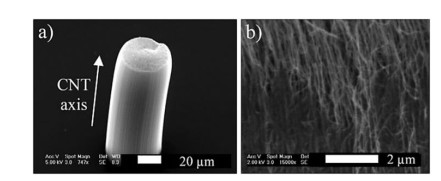









 DownLoad:
DownLoad:

























